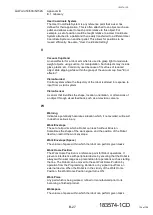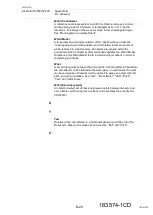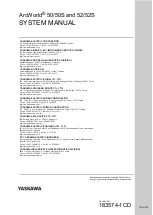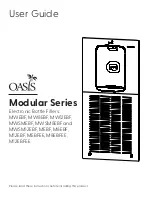
B-21
183574-1CD
183574-1CD
Appendix B
B.1 Glossary
ArcWorld 50/50S/52/52S
Risk Assessment
The process of evaluating the intended use of a machine or system for
foreseeable hazards and then determining the level of risk involved for the
tasks identified.
Risk Mitigation
A secondary step in the risk assessment process that involves reducing
the level of risk for the identified tasks, by applying risk reduction
measures in order to eliminate or mitigate the hazards.
Robot
A re-programmable, multi-functional Robot designed to move material,
parts, tools or specified devices through variable programmed motions for
the performance of a variety of tasks. Common elements which make up a
robot are: Controller, Robot and end-effector. See
,
Robot Coordinate System
The Robot Coordinate System is defined in the base axis of a Robot, and
points in the Robot Coordinate System will be relative to the base of the
robot. Note that by default the Base Coordinate System and Robot
Coordinate System are the same.
Robot Integrator
Robot Programming Language
An interface between a human user and a robot, which relates human
commands to the robot.
Robot Range Limit Monitoring
Monitors the Robot arm or its tool to be in the designated safety area
Robot Simulation
A method for emulating and predicting the behavior and the operation of a
robotic system based on the model (i.e.,. computer graphics) of the
physical system. (R15.07)
Roll
Rotation of the robot end effector in a plane perpendicular to the end of
and
Rotary Joint
A joint which twists, swings or bends about an axis.
Rotary Vector Drive (RV)
A brand name for a speed reduction device that converts high speed low
torque to low speed high torque, usually used on the major (larger) axis.
Rotational Motion
A joint which twists, swings or bends about an axis. An example of this is
the elbow of a human arm.
118 of 126









































